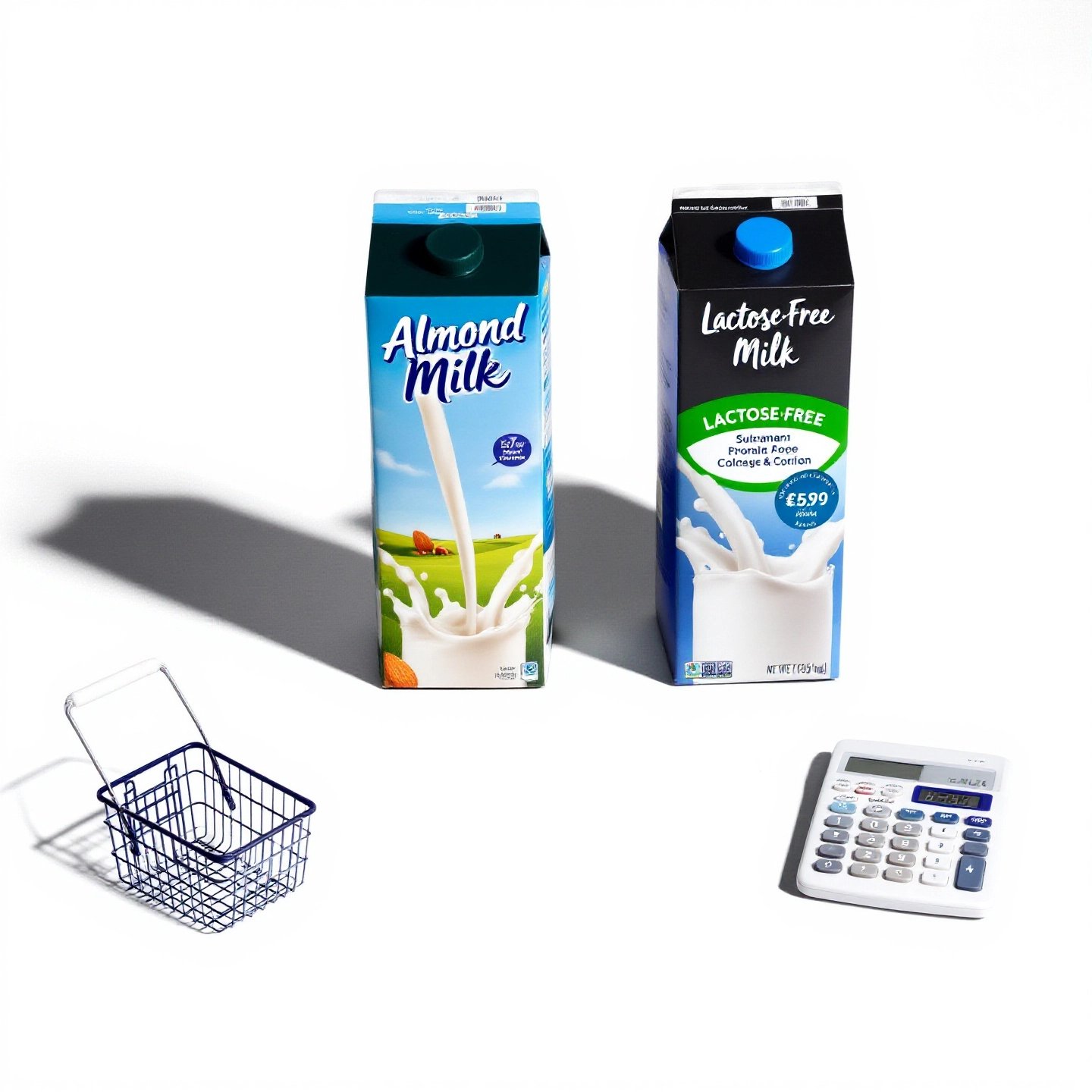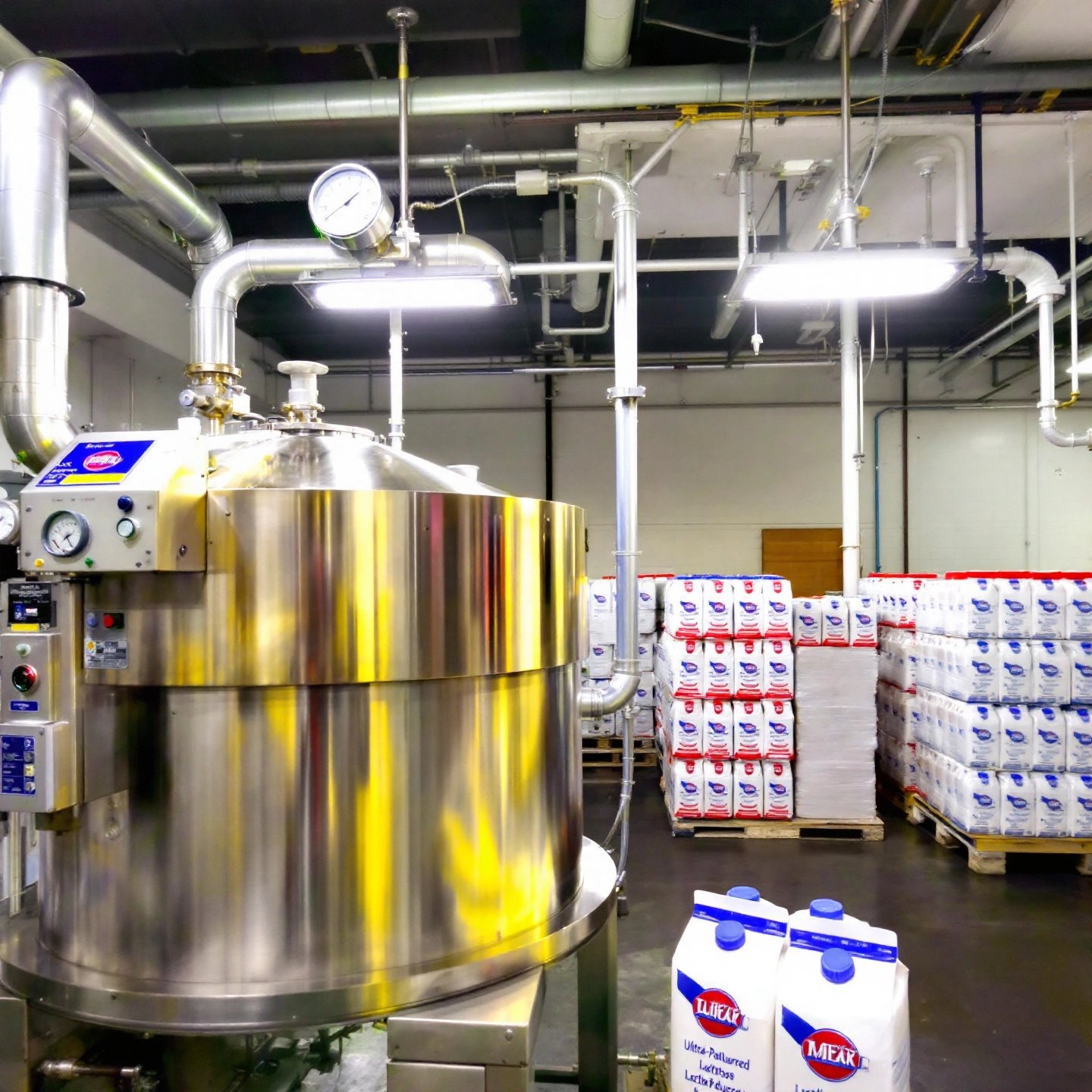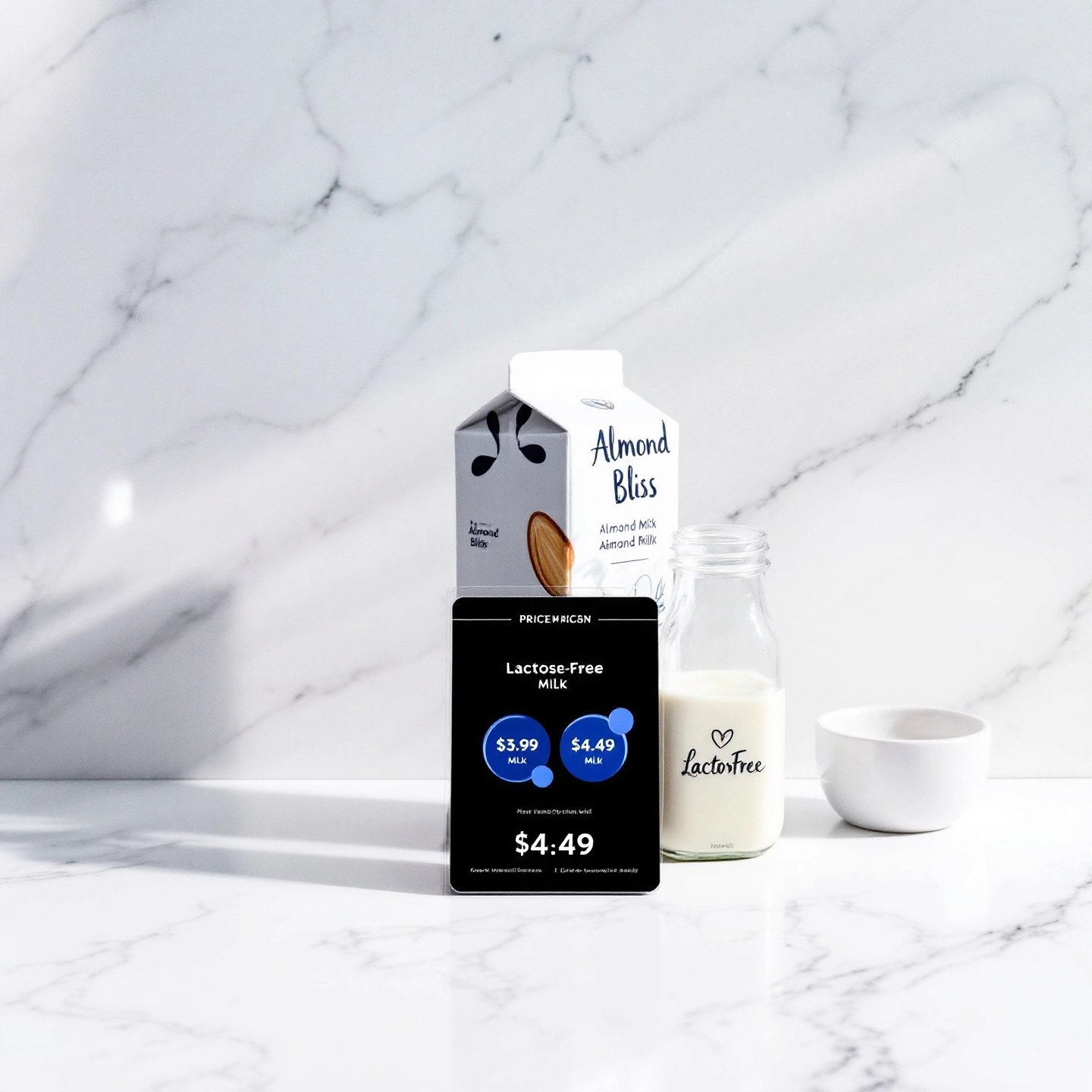Introduction: Understanding the Cost Dynamics
In recent years, the popularity of non-dairy milk alternatives has surged, leading many consumers to question the cost-effectiveness of these options. Among the most frequently compared are almond milk and lactose-free milk. So, is almond milk cheaper than lactose-free milk? The answer is generally yes. Based on current data, almond milk tends to be more affordable per ounce than its lactose-free counterpart. This cost advantage makes almond milk an appealing choice for budget-conscious consumers seeking a dairy alternative.
The cost dynamics of these milk types are influenced by several factors. For almond milk, the price is often driven by the cost of raw almonds and the manufacturing process, which includes grinding the almonds and blending them with water and other ingredients. On the other hand, lactose-free milk typically involves additional processing to remove lactose, which contributes to its higher price point. According to a study by Purdue University, the average price for almond milk is about $0.05 per ounce, whereas lactose-free milk averages around $0.065 per ounce (Purdue University Study).
This initial comparison sets the stage for a more detailed analysis of the factors influencing the pricing of almond milk and lactose-free milk. As we delve deeper, we’ll explore how brand variations, packaging, and market trends further impact these costs, providing you with a comprehensive understanding of what drives the prices of these popular milk alternatives.

Price Comparison: Almond Milk vs. Lactose-Free Dairy Milk
When comparing the costs of almond milk and lactose-free milk, several factors come into play, including brand, packaging, and market availability. To provide a clearer picture, let’s examine the typical cost per ounce for each type of milk, based on data from various brands and retailers.
| Brand | Product | Size | Price | Cost per fl oz |
|---|---|---|---|---|
| Blue Diamond Almonds | Almond Breeze Original Almondmilk | 96 fl oz | $4.79 | $0.05 |
| Silk | Dark Chocolate Almondmilk | 64 fl oz | $3.69 | $0.06 |
| Wholesome Pantry | Original Almondmilk | Half gallon | $2.49 | $0.04 |
| Bowl & Basket | Lactose Free Whole Milk | Half gallon | $3.49 | $0.05 |
| Lactaid | 1% Lowfat Milk | 96 fl oz | $6.49 | $0.07 |
| Fairlife | 2% Reduced Fat Ultra-Filtered Milk | 52 fl oz | $5.29 | $0.10 |
As shown in the table, almond milk generally offers a more economical choice compared to lactose-free milk. For instance, Wholesome Pantry’s Original Almondmilk costs approximately $0.04 per fluid ounce, while Lactaid’s 1% Lowfat Milk is around $0.07 per fluid ounce. This difference highlights the cost efficiency of almond milk, particularly for consumers purchasing in bulk or seeking budget-friendly options.
Brand and packaging significantly influence these prices. Premium brands or those offering organic options may charge more, affecting the overall cost per ounce. Additionally, larger packaging sizes often provide better value, offering lower costs per ounce compared to smaller, more convenient packages. Understanding these nuances can help consumers make informed decisions based on their preferences and budget constraints. As we proceed, we’ll delve into the factors that further influence almond milk pricing, providing insights into how you can maximize your savings.
Factors Influencing Almond Milk Pricing
Almond milk, a popular dairy alternative, owes its pricing to several key factors. Understanding these can help consumers navigate the market more effectively and find affordable options without compromising on quality.
Raw Ingredient Costs
The primary cost driver for almond milk is the price of almonds themselves. Almonds are a relatively expensive crop due to the intensive water requirements and labor involved in their cultivation. According to IBISWorld, the fluctuations in almond prices directly impact the cost of almond milk. For instance, during drought periods in California, where a significant portion of the world’s almonds are grown, prices can spike, leading to higher production costs.
Production Processes
The process of turning almonds into milk involves several steps, including soaking, grinding, and blending with water, followed by filtration to remove solids. This production process can be more costly than traditional dairy milk processing. Additionally, the choice of additives, such as vitamins and minerals for fortification, can further influence the final price. Brands that opt for organic or non-GMO certifications may also incur higher production costs, which are passed on to the consumer.
Brand Variations
Brand reputation and marketing strategies play a significant role in pricing. Well-known brands often charge a premium for their products, banking on consumer loyalty and perceived quality. Conversely, store brands or lesser-known labels might offer more competitive pricing. For example, Walmart’s Great Value almond milk is known for its affordability, often priced lower than premium brands like Califia Farms or Silk.
To find affordable almond milk options, consumers should consider purchasing in bulk or opting for store brands. Comparing prices across different retailers can also yield savings. Additionally, keeping an eye out for sales and promotions can help reduce costs. As we continue, we’ll explore the reasons behind the higher cost of lactose-free milk, providing a comprehensive view of the market dynamics at play.

Understanding the Cost of Lactose-Free Milk
Have you ever wondered why lactose-free milk often comes with a heftier price tag compared to regular milk? The answer lies in the additional processing required to make it suitable for those with lactose intolerance. This process primarily involves the use of lactase, an enzyme that breaks down lactose into simpler sugars, glucose, and galactose, which are easier to digest. According to Tetra Pak, the most efficient method involves adding lactase after the final heat treatment, ensuring a stable product with a longer shelf life. This added step in production not only increases the complexity but also the cost, which is ultimately reflected in the retail price of lactose-free milk.
Market trends also play a significant role in shaping the cost of lactose-free milk. As awareness of lactose intolerance grows, so does the demand for lactose-free products. The Mordor Intelligence report highlights a projected CAGR of 9.41% for the lactose-free milk market from 2025 to 2030, driven by increasing health consciousness and dietary shifts. This growing demand, coupled with the necessity for specialized production techniques, contributes to the higher price point of lactose-free milk compared to its regular counterpart.
In addition to processing and market demand, geographical factors also influence pricing. For instance, regions with higher lactose intolerance rates, such as Asia-Pacific, see a greater demand for lactose-free milk, potentially driving up prices due to supply chain constraints and the need for importation in some areas. As we continue our exploration, we’ll compare the nutritional profiles of almond milk and lactose-free milk to determine which offers better value for consumers.
Nutritional Value vs. Price: Which Offers Better Value?
When choosing between almond milk and lactose-free milk, understanding their nutritional profiles can help you determine which offers better value for your dietary needs. Both milk types cater to specific dietary preferences and restrictions, but they differ significantly in their nutrient composition.
Nutritional Value of Almond Milk
Almond milk is a popular choice for those seeking a low-calorie, plant-based alternative to dairy. Generally, almond milk contains about 30-50 calories per 8-ounce serving, which is significantly lower than traditional dairy milk. However, it’s important to note that almond milk is relatively low in protein, providing only about 1 gram per serving. This is because almond milk often contains only about 2% almonds, with the rest being water and added ingredients like vitamins and stabilizers (Gonna Need Milk)
On the vitamin front, almond milk is often fortified with calcium, vitamin D, and vitamin E, making it a good source of these nutrients, especially for those who do not consume dairy products. However, the naturally occurring nutrients in almonds are diluted in the milk-making process, so the nutritional content largely depends on the fortification practices of the brand.
Lactose-Free Milk Nutrition
Lactose-free milk, on the other hand, offers a nutrient profile nearly identical to regular cow’s milk. It contains about 8 grams of protein per 8-ounce serving, which is significantly higher than almond milk. This makes it a better option for those who rely on milk as a primary protein source. Additionally, lactose-free milk provides essential nutrients such as calcium, phosphorus, vitamin B12, and riboflavin, often enhanced with vitamin D (Healthline)
One distinct difference is the sweetness of lactose-free milk, which results from the breakdown of lactose into glucose and galactose. This process does not change the nutritional value but may affect taste preferences, especially in recipes that require a neutral flavor.
Ultimately, the choice between almond milk and lactose-free milk should be guided by your nutritional goals and dietary restrictions. While almond milk is an excellent option for those looking to reduce calorie intake or avoid animal products, lactose-free milk provides a more comprehensive nutrient profile, especially in terms of protein content. As we move forward, consider how these nutritional factors align with your lifestyle and dietary needs to make the most informed choice.

Shelf Life and Storage: Cost-Efficiency Considerations
When evaluating the cost efficiency of almond milk versus lactose-free milk, shelf life and storage requirements are crucial factors. These elements not only affect the overall value but also influence how consumers plan their purchases and consumption.
Almond Milk Shelf Life
Almond milk’s shelf life varies significantly depending on its type and storage conditions. homemade almond milk lasts about 5 days in the refrigerator, while store-bought refrigerated almond milk can last up to 7 days once opened. Shelf-stable almond milk, however, has a longer unopened shelf life, ranging from 1 to 2 months in the pantry and up to 10 days in the fridge after opening. Proper storage is crucial; for instance, keeping almond milk at the back of the fridge where the temperature is more stable can extend its usability.
Lactose-Free Milk Storage
Lactose-free milk, typically ultra-pasteurized, boasts a slightly longer shelf life. unopened lactose-free milk can last about a week past its sell-by date when continuously refrigerated. Once opened, it remains drinkable for about a week, provided it is stored properly. Freezing lactose-free milk is an option to extend its shelf life further, though it may alter the texture slightly, making it more suitable for cooking and baking rather than drinking.
| Milk Type | Unopened Shelf Life | Opened Shelf Life | Storage Tips |
|---|---|---|---|
| Almond Milk (Refrigerated) | 7-10 days | 7 days | Keep at the back of the fridge |
| Almond Milk (Shelf-Stable) | 1-2 months | 10 days | Store in a cool, dark place |
| Lactose-Free Milk | 1 week past sell-by date | 1 week | Avoid storing on fridge door |
Understanding these storage and shelf life differences can help consumers make informed decisions about which milk type may offer better cost efficiency based on their usage habits. As we explore further, consider how these factors align with your consumption patterns and storage capabilities, ensuring you maximize the value of your milk purchases.
Consumer Preferences and Budget Choices
When it comes to choosing between almond milk and lactose-free milk, consumers often weigh several factors beyond just cost. Understanding these preferences can provide insights into why certain consumers may favor one type over the other, and how these choices align with personal values and lifestyle needs.
Dietary Restrictions and Health Considerations
One of the primary reasons consumers opt for almond milk over lactose-free milk is dietary restrictions. Almond milk is a plant-based option, making it suitable for vegans and those with lactose intolerance. With an increasing number of people adopting plant-based diets, almond milk serves as an excellent alternative for those avoiding animal products. Additionally, it is often chosen by individuals seeking to reduce calorie intake, as almond milk typically contains fewer calories than lactose-free milk (Mayo Clinic). On the other hand, lactose-free milk is preferred by those who want to enjoy the nutritional benefits of cow’s milk without the discomfort caused by lactose.
Taste Preferences
Taste is another significant factor influencing consumer milk preferences. According to a McKinsey survey, taste is the most important reason cited by consumers for their milk choice. Almond milk offers a slightly nutty flavor that some consumers find appealing, especially when used in smoothies, cereals, or as a coffee creamer. Conversely, lactose-free milk retains the familiar taste of traditional dairy milk, making it a preferred choice for those who enjoy the taste of milk but cannot digest lactose.
Ethical and Environmental Considerations
Ethical considerations also play a crucial role in consumer decisions. Almond milk is often chosen by those concerned about animal welfare and the environmental impact of dairy farming. However, it is important to note that almond production has its own environmental challenges, particularly concerning water usage. Despite this, many consumers prioritize plant-based options as part of a broader commitment to reducing their environmental footprint. Meanwhile, lactose-free milk appeals to consumers who value traditional dairy farming practices but require a lactose-free option.
Ultimately, the choice between almond milk and lactose-free milk is influenced by a combination of dietary needs, taste preferences, and ethical considerations. As consumers become more informed and conscious of these factors, their purchasing decisions reflect a balance between personal health, taste satisfaction, and environmental impact. Understanding these preferences can help consumers make informed budget choices that align with their values and lifestyle.
Conclusion: Is Almond Milk the More Affordable Choice?
After exploring the various aspects of almond milk and lactose-free milk, it’s clear that almond milk generally presents a more affordable option. With an average cost of $0.05 per ounce compared to lactose-free milk’s $0.065 per ounce, almond milk offers a budget-friendly alternative for those looking to cut costs without sacrificing the convenience of milk alternatives (Purdue University Study). However, affordability is just one piece of the puzzle.
When deciding between these two options, it’s essential to consider your individual needs and lifestyle. Almond milk is a suitable choice for those embracing plant-based diets or seeking lower-calorie options. It provides a decent source of vitamins and is often fortified to enhance its nutritional profile. Conversely, lactose-free milk is ideal for individuals who prefer the taste and nutritional benefits of cow’s milk but need to avoid lactose.
Ultimately, the best choice depends on personal priorities-whether it’s cost, nutritional content, taste, or ethical considerations. We encourage you to try both almond milk and lactose-free milk to see which aligns best with your dietary goals and lifestyle preferences. For those interested in exploring homemade options, check out our guide to the top plant milk makers of 2025 for a convenient and eco-friendly way to enjoy plant-based milk (Explore top plant milk makers of 2025).
Frequently Asked Questions
1. What is the cheapest milk type?
Dairy milk is typically the most affordable option, but almond milk is often cheaper than lactose-free milk, making it a budget-friendly alternative for those avoiding lactose.
2. Is lactose-free milk more expensive?
Yes, lactose-free milk is usually more expensive due to the additional processing required to remove lactose, which increases production costs.
3. Is almond milk cheaper than normal milk?
While almond milk can be more expensive than regular dairy milk, it is generally cheaper than lactose-free milk, offering a cost-effective dairy alternative.
4. What is the cheapest alternative to dairy milk?
Soy milk is often the cheapest dairy alternative, especially if made at home. Almond milk is also a cost-effective choice compared to lactose-free options.
5. Why do people choose almond milk over lactose-free milk?
People often choose almond milk for its lower calorie content, plant-based nature, and cost-effectiveness compared to lactose-free milk, which is favored for its similar taste to regular milk.
